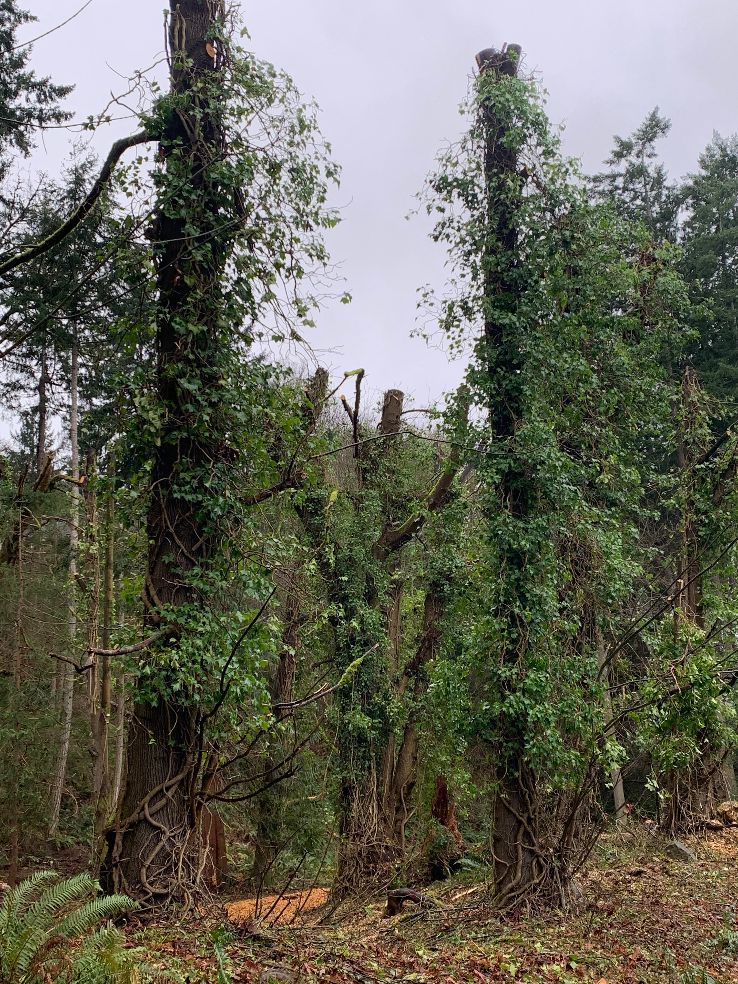Community Editorials
Keep trees healthy; no more topping
The past few summers have shown that air quality can become dangerous very quickly with our changing climate, record-breaking heat and frequent forest fires. Trees improve our outdoor air quality by absorbing pollutants through their leaves and filtering contaminants from the air. Trees also produce oxygen through photosynthesis.
Large trees should be retained in our neighborhoods and we should eliminate harmful pruning practices that can damage and kill them. Tree topping is the practice of cutting off the entire top of a tree. Topping is usually done to improve views, avoid power lines or to keep a large, growing tree contained within a small space.
Topping trees is not a good practice for view enhancement and can create future problems for the tree and the property owner. A quick search of the internet will provide much information on the negative impacts of this practice.
The Washington State Department of Natural Resources states that topping trees is bad for the tree and creates dangerous trees by introducing rot and weakness brought on by the stress of topping.
Topped trees can regain their original height in as little as two years, according to the Illinois Department of Natural Resources Urban and Community Forestry, adding that a topped tree requires more attention in the long run than a properly pruned tree. While a tree may survive topping, its life span will be significantly reduced.
The Washington State University Extension reports that topping is harmful because it removes a key portion of the tree’s crown, which limits the tree’s ability to photosynthesize.
Tree topping can cause significant deformity and abnormal growth patterns. When broad-leaved trees are topped, numerous sprouts may form at the cut. Sprouts are unsightly, weakly supported and grow quickly, creating an even larger problem with views or power lines. Weakly supported sprouts can become a safety hazard to life and property as they grow larger and heavier.
When a conifer is topped, the loss of the leader can result in the uppermost remaining lateral branches turning up and attempting to form a new top. This can result in a crooked or multi-stemmed top with a significant weak spot where the new top or tops join the stem (WSU Extension 2011).
Shoreline Stewards recommends a few alternative pruning techniques to topping for shoreline property owners, such as windowing, interlimbing or skirting up. These techniques provide a healthier and less stressful approach to the tree while still allowing the shoreline property owner to obtain their water view.
Another good source for an explanation of pruning alternatives can be found at the California Urban Forest Council site, that mentions canopy reduction as an alternative to tree topping. Canopy reduction is the removal of small, select limbs at their attachment point. Depending on the species of tree and its health, no more than 25% of the tree’s foliage should be removed.
The city of Tacoma does not allow tree topping. Its regulations for view enhancement state, “Topping is not a pruning standard, nor is it permitted. Select crown reduction, crown raising or thinning by a licensed, bonded and certified arborist are the only pruning methods accepted”
Topping trees is not allowed in shoreline buffers or critical areas. For land that does not fall into one of those two categories, there is no prohibition of tree topping. Friends of Pierce County has asked Councilman Derek Young to make changes to its tree-retention policies. Stay tuned for updates here.
(Marian Berejikian has a B.S. degree in Environmental Biology. She has worked for state, tribal and federal governments and private consulting firms on fisheries-related issues and habitat assessment. She was the technical director for a local community association for three years, and is currently the executive director for Friends of Pierce County. She founded Friends of Pierce County in 2003 and has worked on land-use issues in Pierce County for over 15 years.)


